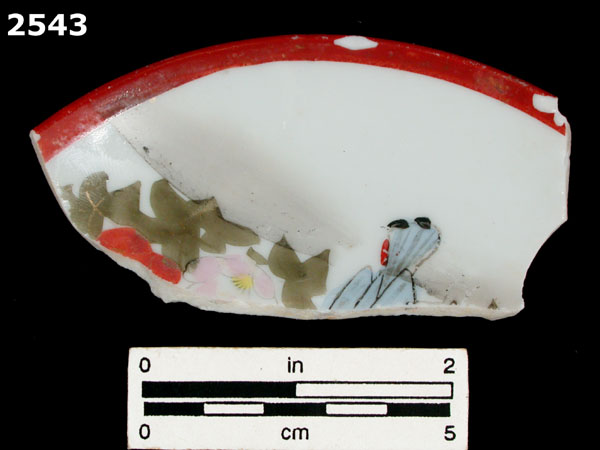View all examples of PORCELAIN, JAPANESE

| Type Name: | PORCELAIN, JAPANESE |
| Type Index: | PORCELAIN |
| Production Origin: | JAPAN |
| Date Range: | 1616-present |
| Defining Attributes: |
Slightly grayish, thick, glass-like vitreous paste, with a well-bonded, nearly transparent feldspathic glaze. Paste is somewhat more granular than Chinese porcelain. Plates and other flat pieces often have marks on their bases from firing stilts used in the kilns Decorations include underglaze blue painting, overglaze polychrome enamels and combinations of these techniques. Underglaze blues tend to be more grayish in tint, and slightly more granular-appearing than the blues found on Chinese pieces. Motifs are inspired by Ming porcelains, but with more attention to realism. Overglaze enamel colors include iron-red, green and gilt enameling over underglaze blue (Imari wares), as well as simpler designs in red, pink and blue. |
| Vessel Forms: |
BOWL CUP FIGURINE JAR PLATE SAUCER TEA POT VASE |
| Comments: | The heavily decorated styles of the Imari tradition were exclusively export wares. The simpler polychrome enamel designs of the Kakiemon family were rarely exported and most popular among the Japanese consumers. |
| Published Definitions: | Godden 1979, Mudge 1986, Schiffer 1978 |